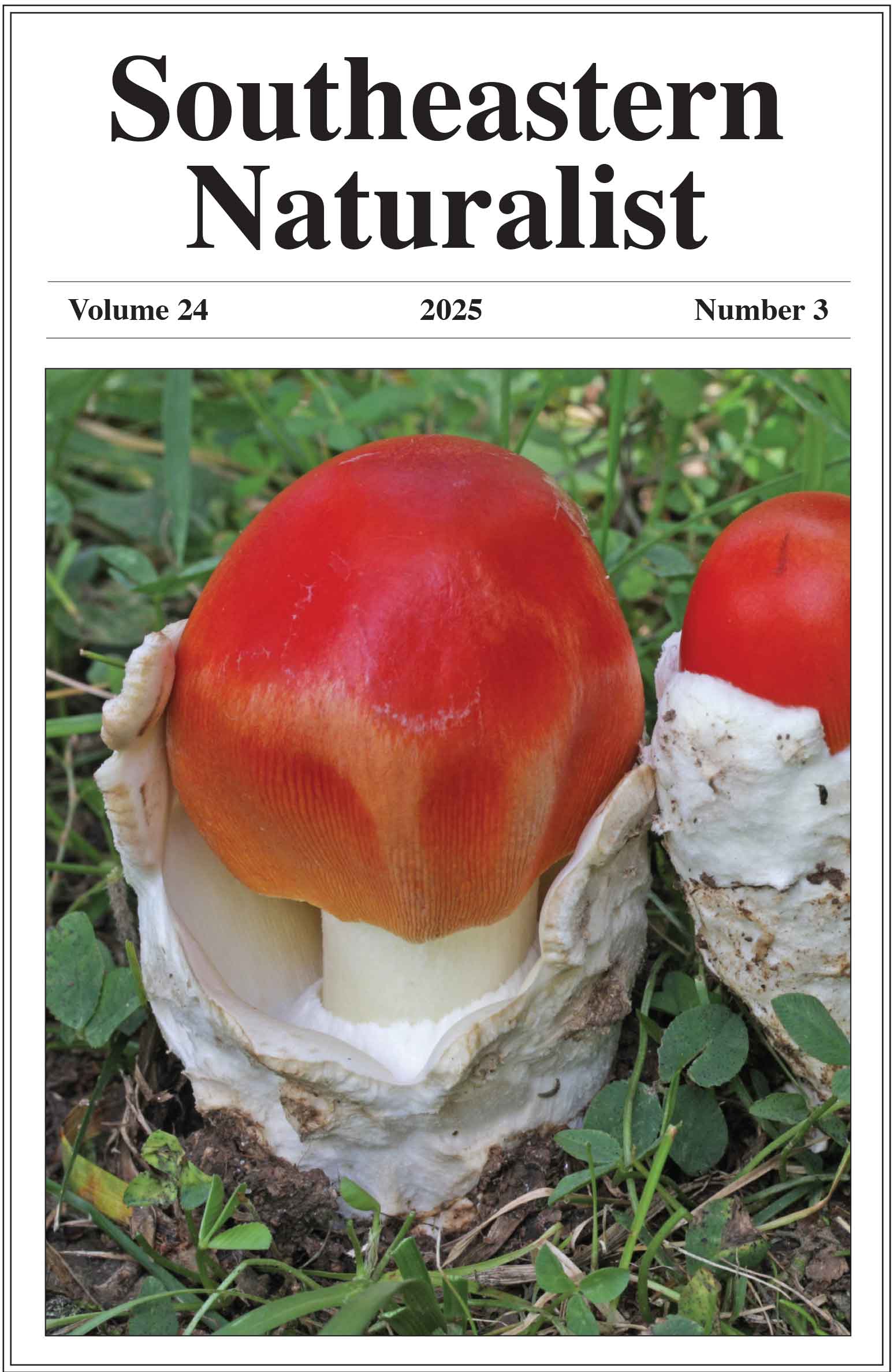Population Persistence and Landscape Use of Eurasian Collared-Dove in the Northern Pee Dee Region of the Carolinas
Douglas B. McNair*
*35 Rowell Road, Wellfleet, MA 02667.
Southeastern Naturalist, Volume 24, Issue 2 (2025): 223–252
First published early online: 25 June 2025
Abstract
I conducted occupancy-modeling surveys of Streptopelia decaocto (Eurasian Collared-Dove) in 2023–2024 at 82 historical sites (i.e., where they had previously been documented to occur since 2004) in the northern Pee Dee region of North Carolina and South Carolina. I detected Eurasian Collared-Doves at 36 sites (22 urban, 14 rural), all but 2 of which had been previously occupied for at least 2 years. All occupied sites (hereafter, called used sites) were located within or near 12 towns, and the 14 rural sites were closer to the center of nearby towns compared to a random sample of rural sites. Land in use for cereal grains (especially Zea mays [Corn]) has increased over 2 decades with a widespread presence of 12 grain elevators and feed mills that handle these grains, indicative of the importance of overlap between small urban landscapes and nearby agricultural areas in rural landscapes. Model-averaged mean estimates of use from single-season static occupancy models of the final 5-model 90% confidence set were 50.5% for both landscapes combined, 54.4% for urban sites and 35.4% for rural sites. The median estimate of the number of Eurasian Collared-Doves per survey was 50, with a high count of 117 during the first winter survey. The highest breeding densities reached 3.5–4.5 pairs/site (6.7–18.4 pairs/40 ha) at 7 urban and rural sites. Use rates and the number of Eurasian Collared-Doves documented during the occupancy-modeling surveys were high in comparison to 2 national surveys (Christmas bird count, breeding bird survey) and 2 regional surveys (spring bird count, NC bird atlas), strongly suggesting these latter surveys have severely under-sampled urban landscapes and rural areas located close to towns in the northern Pee Dee region of the Carolinas. Declining population trends since 1998 on most Christmas bird counts in the coastal plain of South Carolina and southeastern North Carolina, despite an increase over 2 decades in land used for developed (urban) habitat, suggest this large geographic area is likely to produce a declining number of Eurasian Collared-Doves that may disperse to the northern Pee Dee region. Thus, the importance of leap-frog dispersal and range expansion to replenish the Eurasian Collared-Dove population and help maintain site persistence in the northern Pee Dee region of the Carolinas remains uncertain.
![]() Download Full-text pdf (Accessible only to subscribers. To subscribe click here.)
Download Full-text pdf (Accessible only to subscribers. To subscribe click here.)
Access Journal Content
Open access browsing of table of contents and abstract pages. Full text pdfs available for download for subscribers.
Issue-in-Progress: Vol. 24( 4) ... early view
Check out SENA's latest Monograph and current Special Issue in progress:













 The Southeastern Naturalist is a peer-reviewed journal that covers all aspects of natural history within the southeastern United States. We welcome research articles, summary review papers, and observational notes.
The Southeastern Naturalist is a peer-reviewed journal that covers all aspects of natural history within the southeastern United States. We welcome research articles, summary review papers, and observational notes.